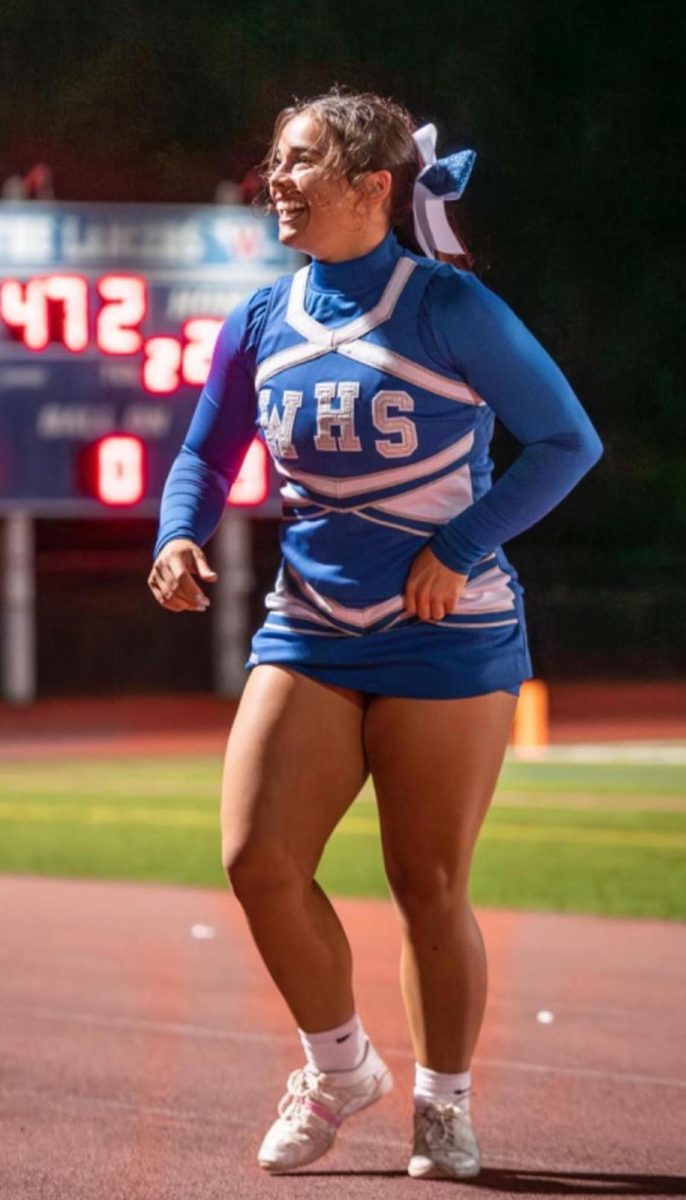Many WHS students participate in athletics both in and out of school. Sports are an opportunity for people to stay in shape, build a routine, and find a community. However, participation in athletics increases a person’s chance of getting hurt.
Broken bones, strained muscles, and stress fractures are some common injuries in high school athletics. However the worst injury students have to look out for cannot be seen: concussions.
Someone can receive a concussion in a split second, but symptoms last much longer.
For senior Sean Kramer, a simple accident changed everything. At basketball practice last winter, Kramer was blocking his teammate’s layup when his legs were hit out from under him. Because of this, he was unable to land properly and ended up hitting the back of his head and passing out.
The CDC’s return to play progression has 6-steps. Step 1: Athletes have to first be back to regular activities, like school. If they are able to do this for a few days, they can then move to step 2: light aerobic activity. These include exercises like bike, walking, or a light jog to increase the athletes heart rate. Step 3: moves the activities to a more moderate level. They should continue to raise their heart rate as in step two, but can now begin moderate-intensity weightlifting.
If able to conduct the activities of step 3 without any worsening in their condition, athletes can move to step 4: Heavy, no contact activity. This includes sprinting, high intensity stationary biking, regular weight lifting routine, and non-contact drills in three planes of motion. Step 5: athlete can return to practice and full contact in a controlled practice environment. Finally, step 6: athletes are allowed to return to competitions.
After being diagnosed with a concussion, these are the steps Kramer had to follow if he wanted to be able to return.
It was two days before Kramer was cleared by his doctors to return to school. He said, “I wasn’t allowed to even watch practice because the noise would be too much.” Over the next two weeks, he went through concussion protocol. This primarily consisted of riding the stationary bike, doing longer rides as the week progressed.
Similarly to Kramer, senior Emma Smathers received a concussion during a basketball game. Smathers was tripped mid-air, landed on the back of her head and was taken off the court by the athletic trainer. The next day, she was put on concussion protocol for the next week and a half.
Smathers started this week off on the stationary bike, but by day four, moved on to light cardio and no-contact practice drills. By day eight, she was able to fully participate and was cleared a few days later.
The events on the court changed things for both Kramer and Smathers in the classroom. Neither athlete missed too many days of school, but their condition made it difficult to complete work.
Teachers did their best to be accommodating. Kramer explains, “my teachers were understanding and gave me extended deadlines.” Smathers adds that her teachers “limited her work load for healing.”
Even with the accommodations, work piled up for both of them. The two of them shared similar feelings of stress as they played catch up.
There is no full-proof way to avoid a concussion; however, there are various types of equipment that aid in preventing head injuries. The most well-known protective equipment used in high school athletics is helmets.
For sports like football, boys lacrosse, baseball/softball, and hockey, helmets are a requirement. In these sports it is important that the helmet is the correct type for a person’s sport and age. However, some sports do not require head protection.
At WHS, girls lacrosse and field hockey are two examples of sports that do not require helmets and masks.
Although some equipment is not a requirement, many athletes still wear it. Senior field hockey player Kayla Kelly says, “My field hockey mask has saved my face so many times.” Sports are unpredictable,“ When you do a penalty corner, you never know how high it is going to go. When I wear it, I feel so much more protected.”
There is no completely concussion-proof helmet, however, they can greatly reduce the risk of head injuries. Along with wearing a helmet, the CDC recommends that hits to the head are avoided as much as possible.
Being out of your sport can be upsetting. Along with that, my high schools struggle with social pressures and not wanting to seem “weak.” While it is not always easy, doing what is best for a student’s health should be top priority. Smathers says, “The protocol is long and frustrating because you want to get back out there but there is a process to follow.”
It is much better to miss a few weeks of practice, than to create permanent brain damage.







